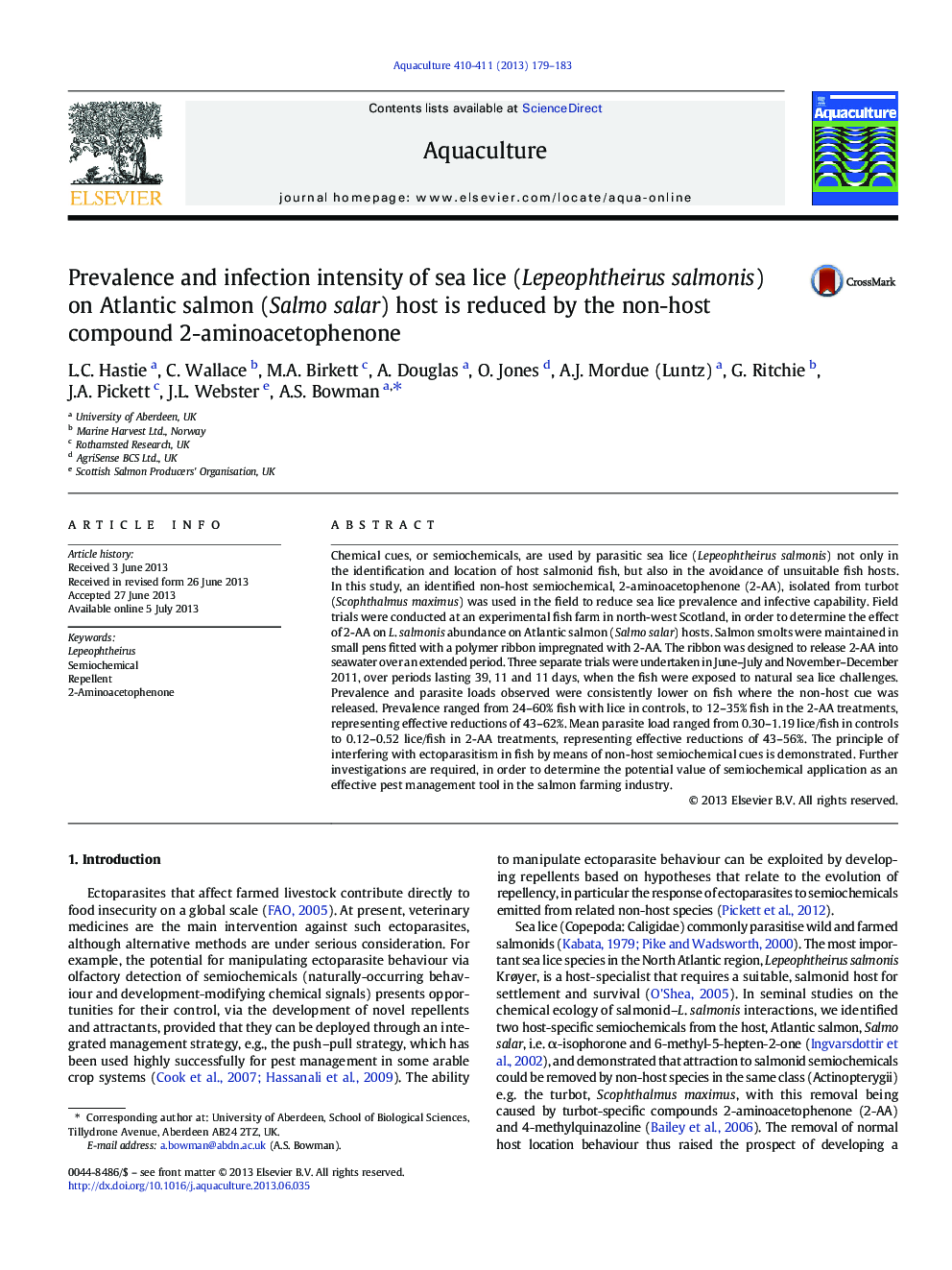| کد مقاله | کد نشریه | سال انتشار | مقاله انگلیسی | نسخه تمام متن |
|---|---|---|---|---|
| 2422073 | 1552868 | 2013 | 5 صفحه PDF | دانلود رایگان |

• The effects of a non-host semiochemical on sea lice on salmon were investigated.
• Experimental pens were fitted with a polymer ribbon designed to release 2-AA.
• During trials lasting 11–39 days, fish were exposed to natural lice challenges.
• Prevalence of fish infected by lice was reduced by 43–62% in treatment pens.
• Mean lice loads/fish were reduced by 43–56% in treatment pens.
Chemical cues, or semiochemicals, are used by parasitic sea lice (Lepeophtheirus salmonis) not only in the identification and location of host salmonid fish, but also in the avoidance of unsuitable fish hosts. In this study, an identified non-host semiochemical, 2-aminoacetophenone (2-AA), isolated from turbot (Scophthalmus maximus) was used in the field to reduce sea lice prevalence and infective capability. Field trials were conducted at an experimental fish farm in north-west Scotland, in order to determine the effect of 2-AA on L. salmonis abundance on Atlantic salmon (Salmo salar) hosts. Salmon smolts were maintained in small pens fitted with a polymer ribbon impregnated with 2-AA. The ribbon was designed to release 2-AA into seawater over an extended period. Three separate trials were undertaken in June–July and November–December 2011, over periods lasting 39, 11 and 11 days, when the fish were exposed to natural sea lice challenges. Prevalence and parasite loads observed were consistently lower on fish where the non-host cue was released. Prevalence ranged from 24–60% fish with lice in controls, to 12–35% fish in the 2-AA treatments, representing effective reductions of 43–62%. Mean parasite load ranged from 0.30–1.19 lice/fish in controls to 0.12–0.52 lice/fish in 2-AA treatments, representing effective reductions of 43–56%. The principle of interfering with ectoparasitism in fish by means of non-host semiochemical cues is demonstrated. Further investigations are required, in order to determine the potential value of semiochemical application as an effective pest management tool in the salmon farming industry.
Journal: Aquaculture - Volumes 410–411, 10 October 2013, Pages 179–183